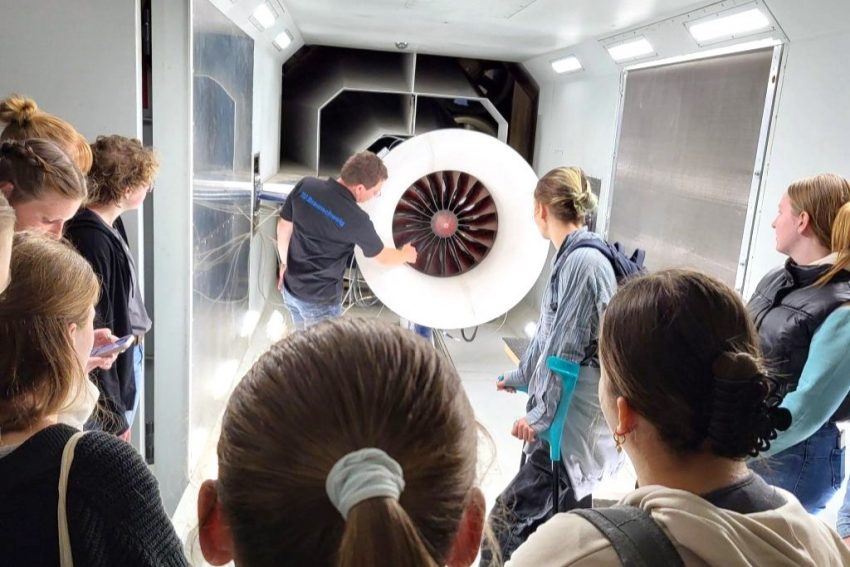Why does the aeroplane’s wing have to change? "step in MINT": Practical insights into flying for female pupils
Developing tomorrow’s aircraft today! 20 participants in the “step in MINT” programme explored the Institute of Jet Propulsion and Turbomachinery (IFAS) and the Institute for Fluid Mechanics (ISM), conducting experiments in the wind tunnel and examining engine blades. The visit gave the female pupils a practical insight into Mechanical Engineering studies and its interdisciplinary nature.

The female pupils also visited the propulsor test rig in the wind tunnel. Photo credit: SCG/TU Braunschweig
What does the future of flying look like, what do we need to consider? Will we fly battery electric or hydrogen? And why does the wing need to change? With these questions in mind, the female pupils explored the future of aviation with Dr. Heiko Schwarz from IFAS.
Using an experimental wind tunnel at the ISM, Dr. Thorsten J. Möller of IFAS explained what needs to be considered in vehicles to ensure aerodynamics and safety on the road, as well as the challenges posed by new wings in aviation. Anadika Baghel reported on the possible formation of ice on wings and the problems associated with this, as well as the flow around wings.
The female pupils gained an insight into the construction of an engine using an exhibition engine and considered which factors need to be taken into account during construction, maintenance and simulations, such as climate and ground conditions at airfields.
Damage detection during maintenance
In a practical part, the female pupils learnt why the aircraft engine maintenance is both challenging and important and got hands-on themselves. They used a borescope to look for damage to worn blades on an aircraft engine. The blades were hidden in a box and could only be seen on a screen through the borescope images.
Finally, the tour continued to the large IFAS wind tunnel. This propulsor test rig is used, among other things, to test engine intakes and their interaction with the fan. These tests provide insights into how the airflow hits the engine and how it affects new casing geometries.
Step in MINT is a programme offered by the Equal Opportunity Office in which female pupils in grades 12 and 13 get to know various STEM degree programmes at TU Braunschweig over the course of a semester. “We want to get young women excited about STEM and open up new perspectives with practical experience,” explains Lena Drabert.
